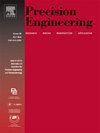Dynamic modeling and damping-induced suppression of cross-coupling in an XY flexure-based stage
IF 3.5
2区 工程技术
Q2 ENGINEERING, MANUFACTURING
Precision Engineering-Journal of the International Societies for Precision Engineering and Nanotechnology
Pub Date : 2025-01-20
DOI:10.1016/j.precisioneng.2025.01.012
引用次数: 0
Abstract
Compliant mechanisms are widely utilized in micro-nano motion applications. Cross-coupling in multi-axis motion is a significant source of errors in precision motion systems. Although the static and dynamic properties of flexure-based nanopositioning stages have been extensively studied, their unified parametric expressions for motion cross-coupling are still lacking, and the impact of damping on cross-coupling has not been thoroughly analyzed. In this paper, we further model the force–displacement relationship of compliant mechanisms and present an analytical framework for the dynamic cross-coupling of a precision motion stage based on the Beam Constraint Model (BCM). We predict the cross-coupling effect and analytically quantify cross-coupling errors in geometry. As a case study, this model is applied to the static and dynamic cross-coupling analysis of a flexure-based nanopositioning stage, examining the effective of damping on cross-coupling reduction. Experimental results show that the dynamic cross-coupling ratio decreased by 6.52% at low frequencies and 10.37% at the resonant frequency when the stage was equipped with passive damping. The nonlinear dynamic cross-coupling model effectively predicts cross-coupling behavior and the impact of damping, offering a simpler and clearer approach for forecasting the damping characteristics of cross-coupling. This model can be integrated into control systems for error compensation and the rejection of damping-induced cross-coupling, providing new insights into damping control in compliant mechanisms.
求助全文
约1分钟内获得全文
求助全文
来源期刊
CiteScore
7.40
自引率
5.60%
发文量
177
审稿时长
46 days
期刊介绍:
Precision Engineering - Journal of the International Societies for Precision Engineering and Nanotechnology is devoted to the multidisciplinary study and practice of high accuracy engineering, metrology, and manufacturing. The journal takes an integrated approach to all subjects related to research, design, manufacture, performance validation, and application of high precision machines, instruments, and components, including fundamental and applied research and development in manufacturing processes, fabrication technology, and advanced measurement science. The scope includes precision-engineered systems and supporting metrology over the full range of length scales, from atom-based nanotechnology and advanced lithographic technology to large-scale systems, including optical and radio telescopes and macrometrology.

 求助内容:
求助内容: 应助结果提醒方式:
应助结果提醒方式:


